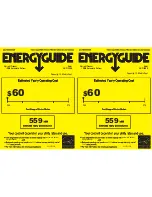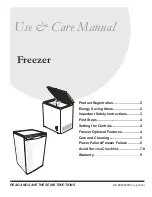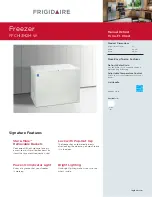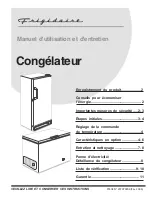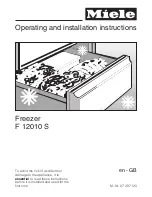
IMPORTANT INSTRUCTIONS
1.
Proper installation:
The appliance shall be installed
and grounded by qualified technicians. The minimum
spacing requirements given on the installation drawing must
be followed.
2.
Never
use your appliance for warming or heating the
room.
3.
Do not leave children alone:
Children should not be
left alone or unattended in area where appliance is in use.
They should never be allowed to sit or stand on any part of
the appliance.
4.
Wear proper apparel:
Loose-fitting or hanging
garments should never be worn while using the appliance.
5.
Do not
repair or replace any part of the appliance unless
specifically recommended in the manual. All other servic-
ing should be referred to a qualified technician.
6. Flammable materials should not be stored near surface
units.
7.
Do not use water on grease fires:
smother fire or
flame or use dry chemical of foam-type extinguisher.
8.
Use only dry potholders:
Moist or damp potholders on
hot surfaces may result in burns from steam. Do not let
potholder touch hot heating elements. Do not use a towel
or other bulky cloth .
9.
Use proper pan size:
Select utensils having flat
bottoms large enough to cover the surface unit heating
element. The use of under-sized utensils will expose a
portion of the element to direct contact and may result in
ignition of clothing. Proper relationship of utensil to burner
will also improve efficiency.
10.
Never leave surface units unattended at high heat
settings:
Boilover causes smoking and greasy spillovers
that may ignite.
11.
Make sure reflector pans or drip bowls are in place:
Absence of these pans or bowls during cooking may
subject wiring or components underneath to damage.
12.
Protective liners:
Do not use aluminium foil to line
surface unit drip bowls or over bottoms, except as
suggested in the manual. Improper installation of these
liners may result in a risk of electric shock, or fire.
13. Only certain types of glass, glass/ceramic, ceramic,
earthenware, or other glazed utensils are suitable for range-
top service without breaking due to the sudden change in
temperature.
14.
Utensil handles should be turned inward and not
extend over adjacent surface units:
To reduce the risk of
burns, ignition of flammable materials, and
spillage due to unintentional contact.
15.
Do not soak removable heating elements:
Heating elements should never be immersed in water.
16.
“Caution":
Do not store items of interest to children
in cabinets above a range or on the backguard of a range -
children climbing on the range to reach items could be
seriously injured.”
17.
“DO not touch surface units or area near units:
Surface units may be hot even though they are dark in
colour. Areas near surface units may become hot enough
to cause burns. During and after use, do not touch, or let
clothing or other flammable materials contact surface units
or areas near units until they have had sufficient time to
cool. Among these areas are the cook-top and surfaces
facing the cook-top.”
18.
When replacing your lead free faucet:
for safety
reasons do not use a spout longer than 150mm (6").
INSTALLATION INSTRUCTIONS:
1. To eliminate the hazard of reaching over heated surface units, cabinet storage space located above the surface of
the units should be avoided. If cabinet storage is to be provided, the hazard can be reduced by installing a range hood that
projects horizontally a minimum of 5" beyond the surface.
2. No spacing between the combination and adjacent cabinetry is required. For spacing between the cooking surface and the
cabinet situated above the combination, note the required minimum distances given on the installation drawing.
3. For satisfactory water drainage of the sink, and proper door functioning, it is important to level the combination in both
directions, using the levelling legs provided on the bottom of the cabinet for this purpose.
4. Although provisions have been made for the combination to be used in a built in manner, it shall be remembered that the
refrigerator of a free standing unit, has the highest efficiency.
A minimum of 1" clearance on the back of the combination
is a must, especially in the case of operation in rooms where temperatures could climb over 32°C (90°F).













